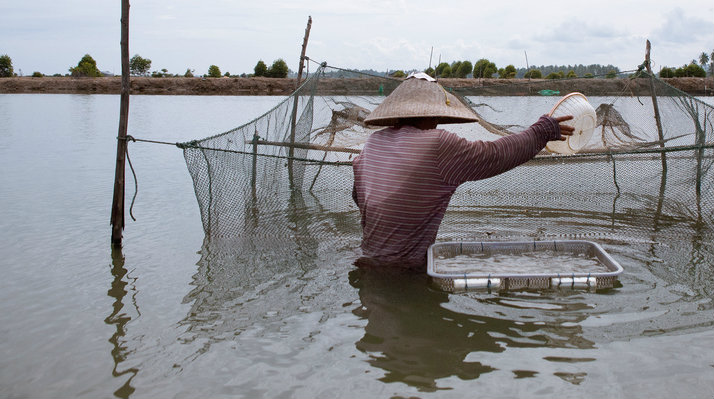By: Mike Ives
Send to a friend
The details you provide on this page will not be used to send unsolicited email, and will not be sold to a 3rd party. See privacy policy.
[HANOI] A cause of a mysterious disease devastating shrimp farms across Asia since 2009 has been tracked back to a strain of a bacteria native to coastlines around the world.
The shrimp early mortality syndrome has perplexed experts for years, in a region where roughly one million people depend on shrimp farming for survival.
So far countries officially reporting the disease — also referred to as acute hepatopancreatic necrosis syndrome — include China, Malaysia, Thailand and Vietnam, but potentially it could affect shrimp farming further afield in Asia, as well as parts of Latin America and Africa.
The finding was reported earlier this month by the UN Food and Agriculture Organization (FAO), which partially financed the research on the bacteria, Vibrio parahaemolyticus."To find out the cause of the syndrome gives us a more suitable way to prevent and deal with the problem," said Phan Thi Van, vice director of the government-funded Research Institute for Aquaculture No. 1 in Vietnam, one of the affected countries.
Donald Lightner, the study's lead researcher and a professor of veterinary science and microbiology at the University of Arizona, said in an FAO statement on 3 May that his team had isolated a pure culture of the bacteria and reproduced it in their Arizona laboratory.
The high virulence of this bacteria to shrimp may be due to a bacteriophage — a virus that attack bacteria —which affects this particular strain of the bacteria, said Lightner.
In 2011, Asian countries produced three million tonnes of shrimp worth US$13 billion most of which is consumed in the United States, Japan and China. But major disease outbreaks have been reported in China and Thailand since 2009, the FAO statement said. Vietnam and Malaysia have also reported the disease.
The new discovery is significant because previous disease outbreaks on shrimp farms have always been caused by viruses, rather than bacteria, said Rohana Subasinghe, a senior aquaculture officer at the FAO.
Fortunately, freezing the shrimp kills the bacterial strain that has caused mass die-offs, Subasinghe tells SciDev.Net.
But he warns that although the vast majority of the world's shrimp is shipped frozen, a small percentage is shipped fresh, posing potential risks for disease transfer.
"As we know the causative agent, we can try to develop more focused and precise programmes and strategies," he says, adding that new quarantining and sampling requirements may eventually be necessary.
In Vietnam, researchers are testing a range of interventions that would help prevent the spread of the disease, says Phan Thi Van.
She says the pilot interventions, which largely focus on improving management and water and shrimp quality at shrimp ponds, will require further testing before a large-scale intervention can begin.
This article has been produced by SciDev.Net's South-East Asia & Pacific desk.














